|
FAUNA distribution in the study area
I. Avian distribution in the Pangong wetland Area:
Avifauna of Ladakh was first studied by Ferdinand Stoliczka, an Austrian- Czech palaeontologist, who carried out a massive expedition in the region in the 1870s. Ladakh has a great diversity of birds — a total of 225 species have been recorded. The digital documentation of birds during the field work is given in Figures 37 to 53, which demonstrates the richness. Many species of finches, robins, redstarts (like the Black Redstart that migrates to the south), and the Hoopoe are common in summer. The Brown-headed Gull is seen in summer on the river Indus and on some lakes like the Changthang and Pangong Lake. The Pangong lake acts as an important breeding ground for a variety of birds including a number of migratory birds. During summer, the Bar-headed goose and Brahmini ducks are commonly seen here. Formerly, Pangong Tso had an outlet to Shyok River, a tributary of Indus River, but it was closed off due to natural damming. Two streams feed the lake from the Indian side, forming marshes and wetlands at the edges. Resident water-birds include the Brahminy duck also known as the Ruddy Sheldrake and the Bar-headed Goose. These ducks migrates to South India in winter to escape the extreme cold temperature and return to Ladakh in Mid May. Other birds include the Raven, Red-billed Chough, Tibetan Snowcock, and Chukar. The endangered Black-necked Crane (Grus nigricollis), being the state bird of Jammu and Kashmir are found scattered in the Tibetan plateau, is also found in parts of Ladakh. There are about 36 individuals sighted and reported by the wildlife department along with other research institution. The recent team visit for present study could list out 50 species (Table 5) of birds in quite limited time and also spot 26 Black-necked Cranes at various wetland locations between Merak and Hanle. Their distribution is very much restricted to wetlands, marshy areas, even closer to village hamlets. The Lammergeier, Upland Buzzard, Golden Eagle and some other quite interesting raptors are spotted at sereval regions of Ladakh, especially Leh, Merak, Chumatang and Hanle. The Brown-headed Gull breeds at Ladakh region, migrates to Sea coast during winter till summer. Pangong lake, though brakish water quality harboured several Brown headed-gulls at the centre and at the peripheral region brahminy ducks, Bar-headed geese along with other birds. The presence of Brown headed-gull at the upland wetland is quite interesting as they are usually seen only at sea coast. Wagtails like the White wagtail, Citrine wagtail, and Yellow wagtail were observed thriving in great numbers all throughout Ladakh region. These birds breed in Ladakh, migrates to south to warmer parts during winter. The avian diversity of this high altitude wetland proves quite rich, attributing to the landscape, food availability and the climatic condition.
Table 5: List of birds observed during present study at Ladakh.
| Sl no. |
Common name |
Scientific Name |
Location |
Ind. |
M |
S |
| 1 |
Bar-headed Goose |
Anser indicus |
Pangong Lake, Hanle, Chushul |
56 |
|
LC |
| 2 |
Black Redstart |
Phoenicurus ochruros |
Leh, She, Changla Pas |
|
|
LC |
| 3 |
Black-billed Magpie |
Pica pica |
Leh, Merak, She, Hanle, Chumatang |
|
|
LC |
| 4 |
Black-headed Gull |
Larus ridibundus |
Pangong Lake, Chushul, Indus river, Merak, Loma, Chumatang, Hanle |
12 |
|
LC |
| 5 |
Black-necked Crane |
Grus nigricollis |
Chushul, Loma, Hanle |
26 |
|
V |
| 6 |
Black-winged Stilt |
Himantopus himantopus |
Loma |
4 |
|
LC |
| 7 |
Blue Rock Pigeon |
Columba livia |
Leh, Merak, Hanle |
|
|
LC |
| 8 |
Brown Wood Owl |
Strix leptogrammica |
Hanle |
|
|
LC |
| 9 |
Brown-headed Gull |
Larus brunnicephalus |
Pangong Lake, Chushul, Indus river, Merak, Loma, Chumatang, Hanle |
23 |
|
LC |
| 10 |
Chestnut-eared Bunting |
Emberiza fucata |
Chushul, Loma, Merak, Chumatang, Hanle |
|
|
LC |
| 11 |
Chukar |
Alectoris chukar |
Changla Pas, Hanle |
|
|
LC |
| 12 |
Citrine Wagtail |
Motacilla citreola |
Merak, Hanle |
2 |
* |
LC |
| 13 |
Common Hoopoe |
Upupa epops |
Chushul, Loma, Chumatang |
|
* |
LC |
| 14 |
Common Kestrel |
Falco tinnunculus |
Hanle |
|
* |
LC |
| 15 |
Common Merganser |
Mergus merganser |
Chushul, Loma, ,Indus river |
4 |
* |
LC |
| 16 |
Common Raven |
Corvus corax |
Merak, Chumatang, Loma, She, Hanle |
|
|
LC |
| 17 |
Common Redstart |
Phoenicurus phoenicurus |
Merak, Hanle |
|
* |
LC |
| 18 |
Common Sandpiper |
Actitis hypoleucos |
Loma, Tangste |
2 |
* |
LC |
| 20 |
Common Tern |
Sterna hirundo |
Pangong Lake, Merak |
1 |
* |
LC |
| 21 |
Common Wood Pigeon |
Columba palumbus |
Leh, Merak, Hanle, Chumatang |
|
* |
LC |
| 22 |
Cotton Pygmy Goose |
Nettapus coromandelianus |
Chushul, Loma |
3 |
* |
LC |
| 23 |
Daurian Redstart |
Phoenicurus auroreus |
Leh, Changla Pas |
|
* |
LC |
| 24 |
Desert Wheatear |
Oenanthe deserti |
Merak |
|
* |
LC |
| 25 |
Eurasian Tree Sparrow |
Passer montanus |
Leh, Merak, Hanle, She, Chumatang |
|
* |
LC |
| 26 |
Ferruginous Pochard |
Aythya nyroca |
Pangong Lake |
4 |
* |
NT |
| 27 |
Fire-fronted Serin |
Serinus pusillus |
Leh, Changla Pas |
|
* |
LC |
| 28 |
Garganey |
Anas querquedula |
Pangong Lake, Tangste |
4 |
|
LC |
| 29 |
Golden Eagle |
Aquila clanga |
Leh, Changla Pas, Tangste |
|
|
V |
| 30 |
Great Crested Grebe |
Podiceps cristatus |
Pangong Lake, Merak, Loma, Hanle |
12 |
|
LC |
| 31 |
Green Sandpiper |
Tringa ochropus |
Chaumatang, Loma, Pangong Lake |
1 |
|
LC |
| 32 |
Himalayan Snowcock |
Tetraogallus himalayensis |
Changla Pas, Hanle |
|
|
LC |
| 33 |
Horned Lark |
Eremophila alpestris |
Leh, Merak, Chushul, Changla Pas, Hanle, Chumatang, Loma |
|
* |
LC |
| 34 |
Lammergeier |
Gypaetus barbatus |
Merak |
|
|
LC |
| 35 |
Lesser Spotted Eagle |
Aquila pomarina |
Hanle |
|
|
LC |
| 36 |
Northern Pintail |
Anas acuta |
Pangong Lake, Tangste, Loma, Hanle |
28 |
* |
LC |
| 37 |
Osprey |
Pandion haliaetus |
Chumatang la |
|
|
LC |
| 38 |
Palla's Fish Eagle |
Haliaeetus leucoryphus |
Hanle |
1 |
* |
V |
| 39 |
Palla's Gull |
Larus ichthyaetus |
Pangong Lake |
1 |
* |
LC |
| 40 |
Red-billed Chough |
Pyrrhocorax pyrrhocorax |
Leh, Merak, She, Hanle, Pangong Lake, Loma, Chumatang |
|
* |
LC |
| 41 |
Red-necked Phalarope |
Phalaropus lobatus |
Tangste |
1 |
* |
LC |
| 42 |
Ruddy Shelduck |
Tadorna ferruginea |
Pangong Lake, Chushul, Indus river, Merak, Loma, Chumatang, Hanle |
72 |
* |
LC |
| 43 |
Ruddy Turnstone |
Arenaria interpres |
Chushul |
1 |
|
LC |
| 44 |
Tibetan Sandgrouse |
Syrrhaptes tibetanus |
Merak |
|
* |
LC |
| 45 |
Tibetan Snowcock |
Tetraogallus tibetanus |
Changla Pas, Hanle |
|
* |
LC |
| 46 |
Tree Pipit |
Anthus trivialis |
Hanle, Chushul, Merak, Loma |
|
* |
LC |
| 47 |
Upland Buzzard |
Buteo hemilasius |
Hanle |
|
|
LC |
| 48 |
White Wagtail |
Motacilla alba |
Leh, Changla Pas, Chushul, She, Loma, Hanle, Pangong Lake, Merak, Tangste |
56 |
* |
LC |
| 49 |
White Wagtail ssp. Personata |
Motacilla alba personata |
Loma, Chumatang |
2 |
* |
LC |
| 50 |
White-winged Redstart |
Phoenicurus erythrogaster |
Leh, Changla Pas, Tangste, Merak, Hanle |
|
* |
LC |
| 51 |
Yellow Wagtail |
Motacilla flava |
Merak |
1 |
* |
LC |
Note: M – Migratory, S – IUCN status, V – Vulnearable, LC – Least Concern, NT – Near Threatened
The BNHS and BirdLife International have listed Pangong Tso as an Important Bird Areas (IBA) criteria A1 (Islam and Rahmani, 2004).
A1 (Globally threatened species), Criterion: The site is known or thought regularly to hold significant numbers of a globally threatened species, or other species of global conservation concern.The site qualifies if it is known, estimated or thought to hold a population of a species categorized by the IUCN Red List as Critically Endangered, Endangered or Vulnerable. In general, the regular presence of a Critical or Endangered species, irrespective of population size, at a site may be sufficient for a site to qualify as an IBA. For Vulnerable species, the presence of more than threshold numbers at a site is necessary to trigger selection. Thresholds are set regionally, often on a species by species basis. The site may also qualify if holds more than threshold numbers of other species of global conservation concern in the Near Threatened, Data Deficient and, formerly, in the no-longer recognized Conservation Dependent categories. Again, thresholds are set regionally (www.birdlife.org).
Black-necked Crane: Black-necked Crane (Grus nigricollis) is classified as Vulnerable under the IUCN Red List of threatened Animals (figure 36), because it has a single small population that is declining owing to the loss and degradation of wetlands, and changing agricultural practices in both its breeding and wintering grounds. However, the population has apparently increased in recent years. It breeds on the Qinghai-Tibetan plateau, China, with a small population in adjacent Ladakh, India. Sighting of Black-necked Cranes in the study area is given in Figure 37.Six wintering areas have been identified at lower altitudes on the Qinghai-Tibet and Yunnan-Guizhou plateaus, China, including counts of 3,562 birds in Yunnan and western Guizhou in winter 2003 and, in Tibet, 4,277 in 1999 increasing to 6,940 in 2007. It also winters in Bhutan (500 individuals), and Arunachal Pradesh, India (10 individuals) and small numbers have been recorded in Vietnam. These figures imply a total world population of approximately 11,000 individuals, although it is estimated that the number of mature individuals is perhaps 8,800. Major threats to this species are Intensive grazing, pesticide, planting high yield winter wheat rather than traditional crops, drying-up of marshes and desertification as a result of surrounding development and agriculture, dam, habitat degradation and climate change (BirdLife International, 2009).
Golden Eagle: Golden Eagle (Aquila clanga) has a small population which appears to be declining owing to extensive habitat loss and persistent persecution. It is therefore listed as Vulnerable under the IUCN Red List of threatened Animals. It breeds in Finland, Latvia, Lithuania, Estonia, Poland, Belarus, Moldova, Russia, Ukraine, Kazakhstan, mainland China and Mongolia. Passage or wintering birds occur in small numbers over a vast area, including central and eastern Europe, north and east Africa, the Middle East, the Arabian peninsula, the Indian subcontinent and south and South-East Asia. Numbers appear to have declined in the western half of its range and in some parts of its Asian range (BirdLife International, 2008).
Palla's Fish Eagle: Palla's Fish Eagle (Haliaeetus leucoryphus) has a small, declining population as a result of widespread loss, degradation and disturbance of wetlands and breeding sites throughout its range. It therefore qualifies as Vulnerable under the IUCN Red List of threatened Animals. It occurs across a huge range from Kazakhstan (may no longer breed), southern Russia (possibly still breeds), Tajikistan, Turkmenistan (probably dispersing non-breeders) and Uzbekistan, east through Mongolia and China, south to northern India, Pakistan, Bhutan, Bangladesh and Myanmar. The main breeding populations are believed to be in China, Mongolia and the Indian subcontinent. The major threats are habitat loss, degradation and disturbance. Across the Indian subcontinent, and probably most of its range, wetlands have been drained or converted for agriculture and human settlements. The felling of large trees near wetlands has reduced the availability of nest and roost sites. The spread of water hyacinth Eichhornia crassipes is a problem in India, as is the siltation of lakes due to catchment deforestation (BirdLife International, 2008).
Ferruginous Pochard: Ferruginous Pochard (Aythya nyroca) has rapid declines in Europe, but evidence of declines in the larger Asian populations is sparse, and sometimes contradictory, so it is currently listed as Near Threatened under the IUCN Red List of threatened Animals. Evidence of rapid declines in Asia would qualify the species for uplisting to Vulnerable. Aythya nyroca breeds in south-western Asia (east to China and south to Pakistan and India), central and eastern Europe, and north Africa (BirdLife International, 2008).
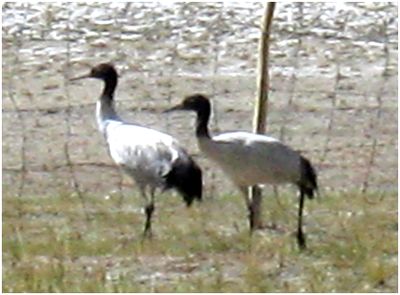
Figure 36. Black-necked Crane (Grus nigricollis)
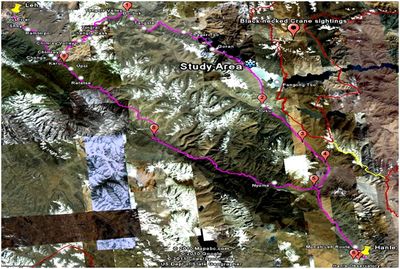
Figure 37: Black necked Crane sightings near Pangong Lake area.
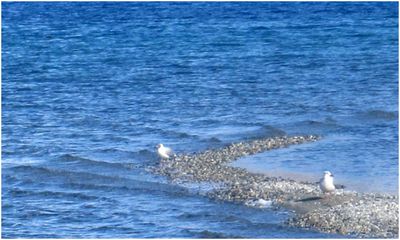
Figure 38:. Brown headed gull
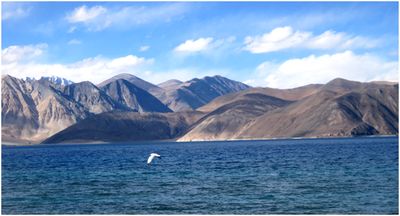
Figure 39: Black headed gull
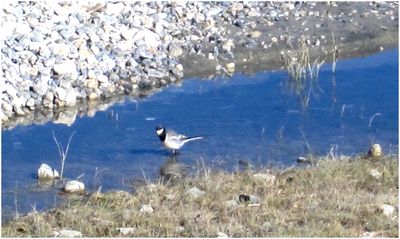
Figure 40: White wagtail (Motacilla alba)
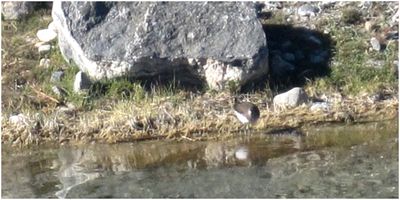
Figure 41: Wood Sandpiper
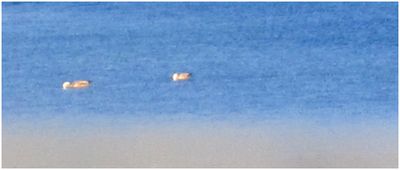
Figure 42: Ruddy Shelduck
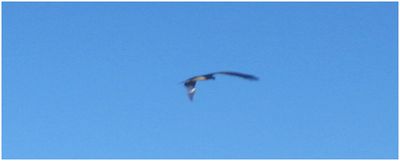
Figure 43: Golden eagle
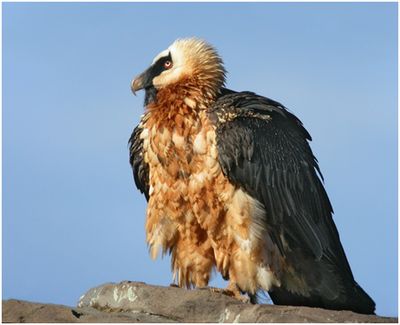
Figure 44: Lammergeier
Source: http://www.birdforum.net/gallery/data/529
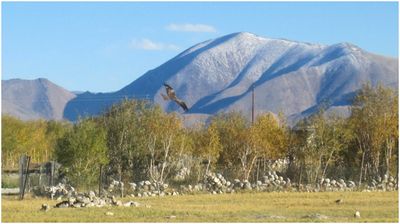
Figure 45: Lesser spotted eagle
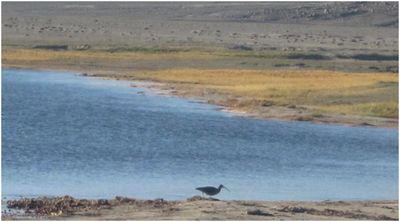
Figure 46: Curlew
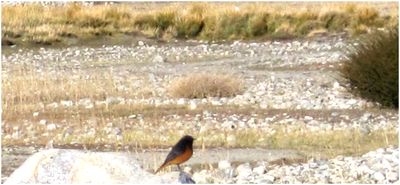
Figure 47: Black redstart
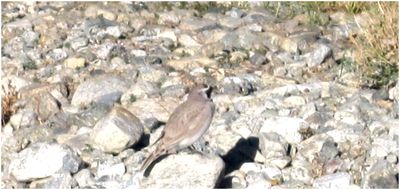
Figure 48: Horned Lark
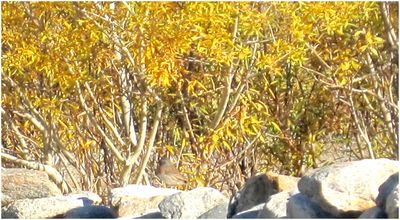
Figure 49. Fire-fronted Serin
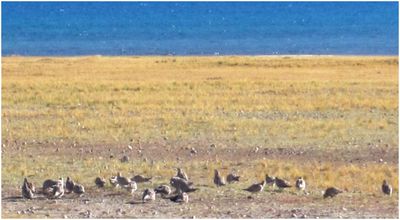
Figure 50: Tibetian Woodcock
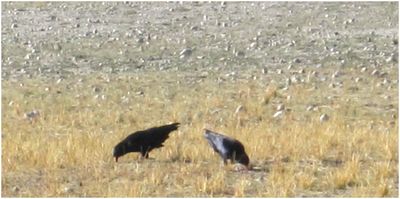
Figure 51. Red billed Cougch
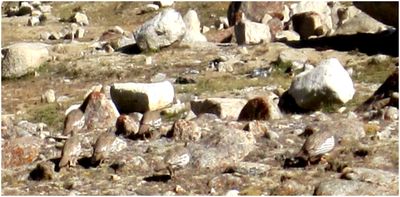
Figure 52. Chukar
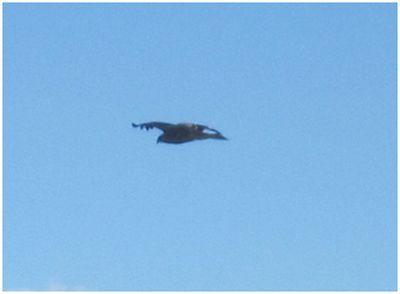
Figure 53. Upland Buzzard.
|